Quick Microwave Lemon Curd
Making microwave lemon curd is easy and it is a great use of fresh lemons. It’s bright, thick, and full of lemon flavor.
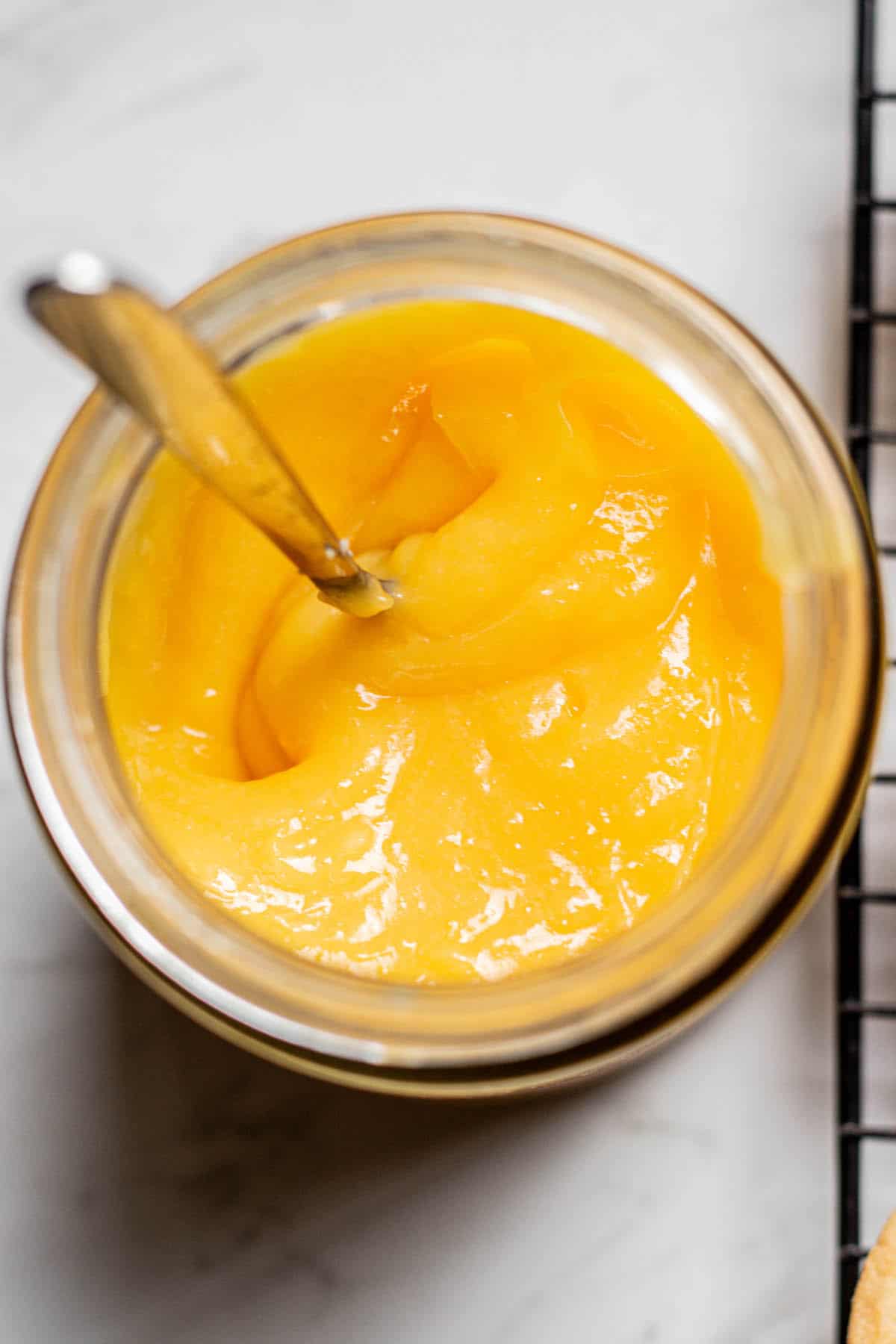
This easy lemon curd recipe using a microwave method is zesty and tart, sweet but not too sweet. It has a rich, creamy texture that’s thick enough for spreading on toast or filling desserts like lemon tarts and cakes.
The perfect lemon curd is versatile and can brighten a variety of dishes. It offers a quick and easy way to bring a burst of lemon flavor to so many baked goods. Using this microwave version takes a fraction of the time it would making this on the stove.
Ingredients
This easy microwave lemon curd recipe uses 4 simple ingredients. Find the ingredient amounts in the printable recipe card at the bottom of this post.
- Butter. You can use salted butter or unsalted butter. If you don’t have salted butter, adding in a pinch of salt will bring you to a grand total of 5 ingredients.
- Granulated White sugar.
- Eggs (whole eggs and yolks). This lemon curd recipe uses 3 egg yolks and one whole egg. Don’t worry about wasting the remaining 3 egg whites, though. Egg whites freeze very well, and you can use them in future meringue desserts.
- Fresh lemons (fresh lemon juice and zest). Ideally you want to use freshly squeezed lemon juice, not bottled lemon juice. The variety of lemons used will change the tanginess of the curd. You can use regular lemons for a really zingy flavor. Varieties such as Eureka, Lisbon, or Yen Ben. You can use Meyer lemons too, which are actually a cross between a lemon and an orange so it is sweeter than other varieties.
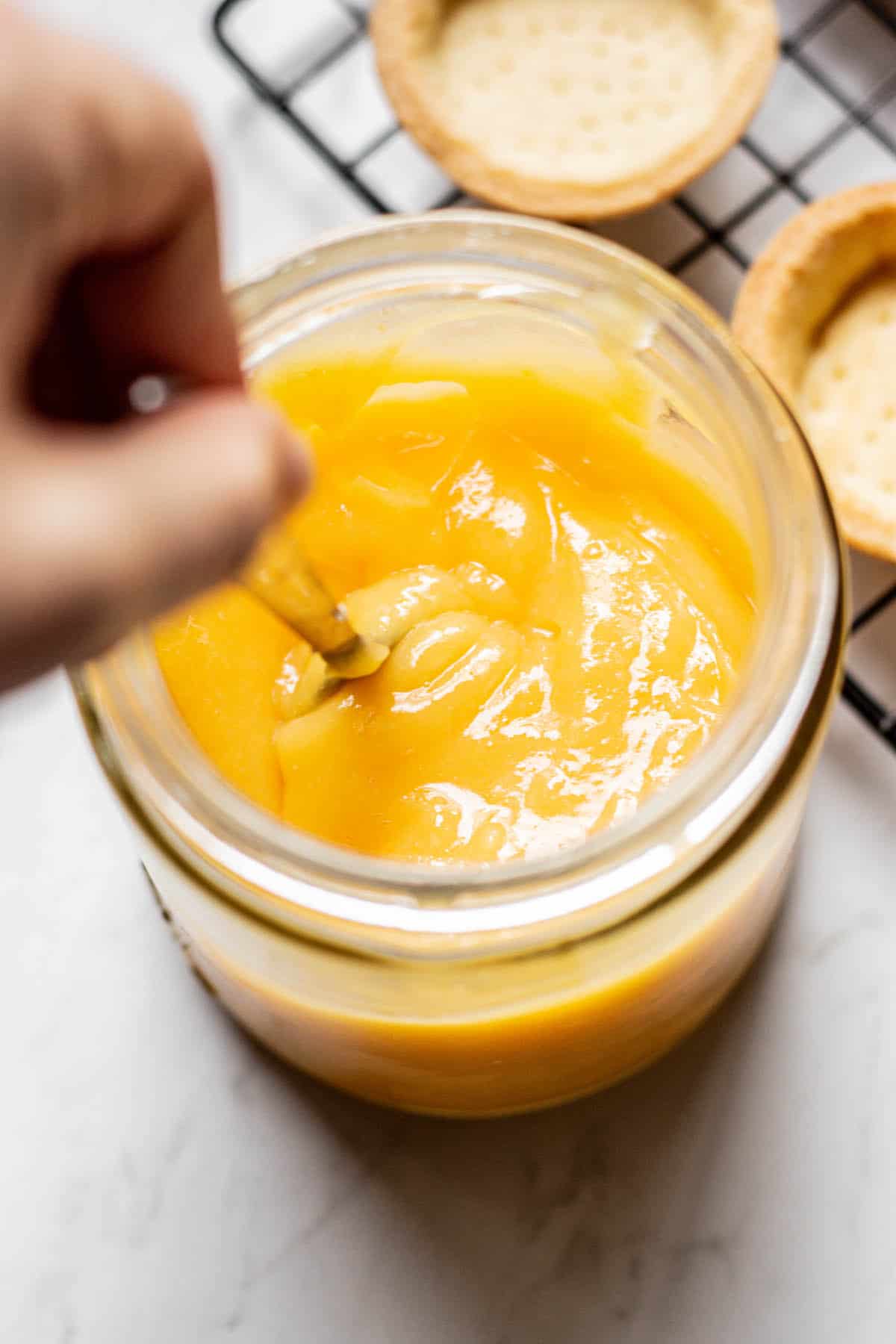
How to make microwave lemon curd
- In a large microwave-safe bowl, whisk together the egg yolks, whole egg, and sugar until well combined. Whisk lemon juice and lemon zest into the egg mixture.
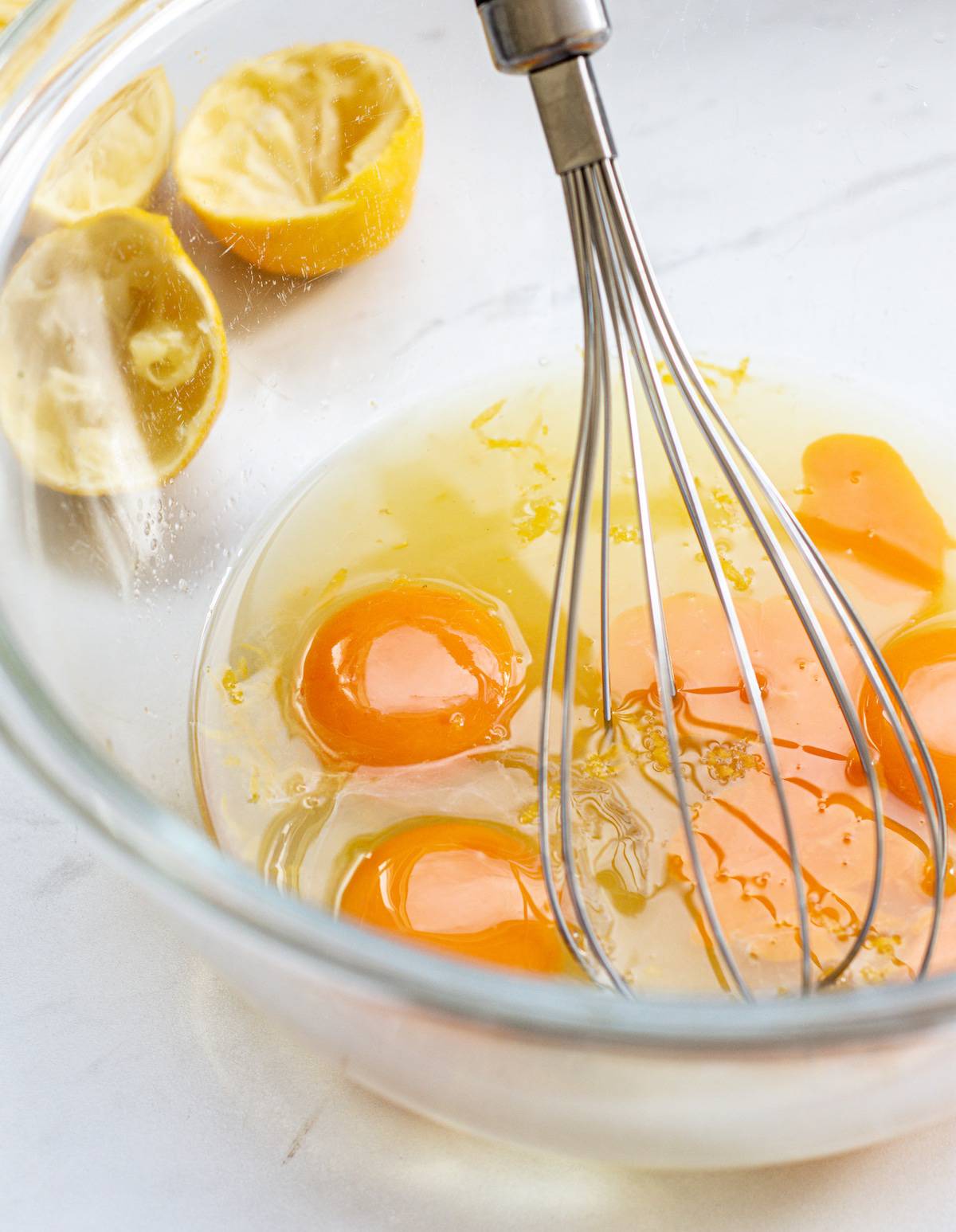
- Place the bowl in the microwave and cook in 40-second to 1-minute increments, stirring each time for around 3-4 minutes.
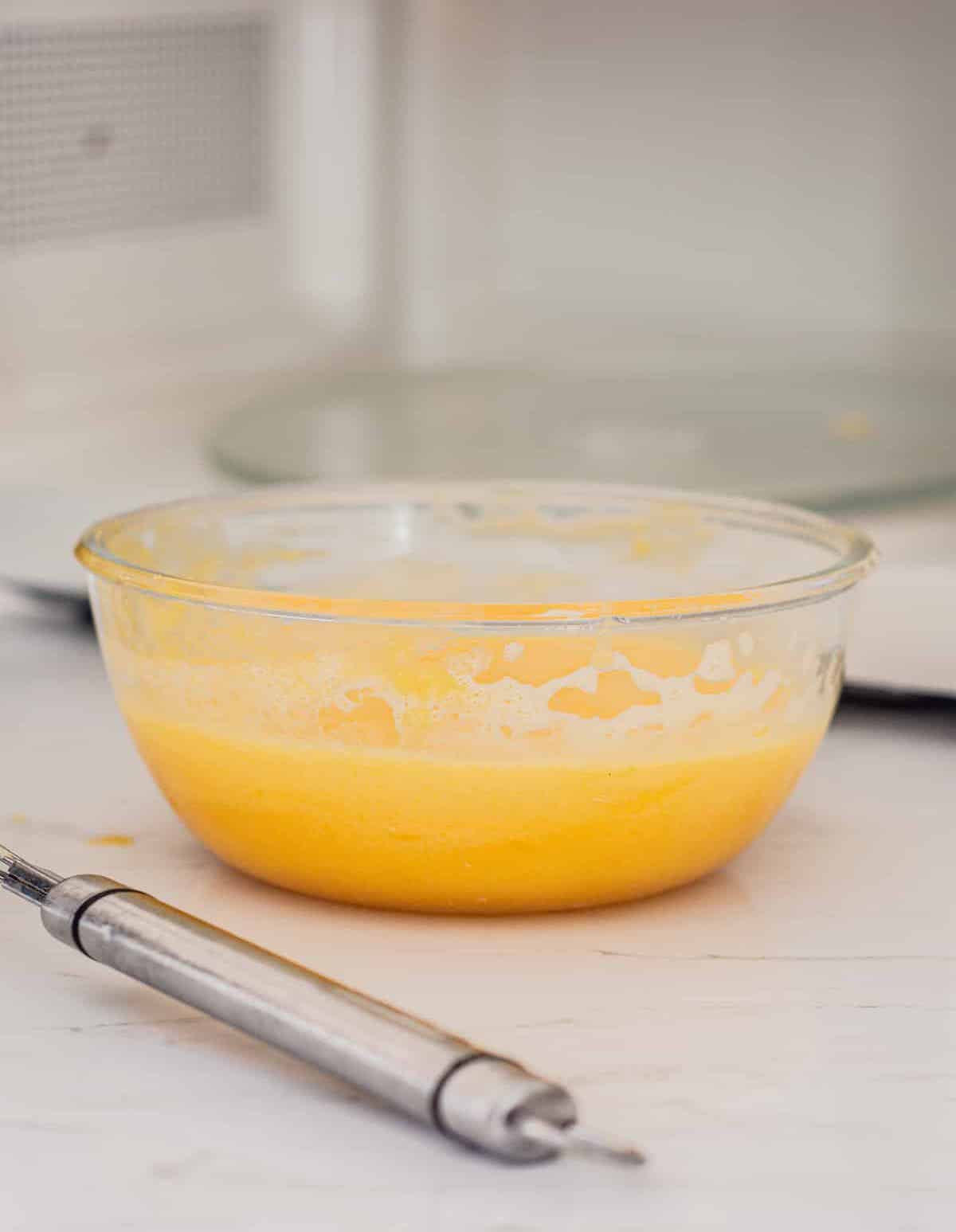
- This time may increase or decrease depending on the strength of your microwave. The lemon curd may puff up a little in the microwave near the end of cooking time.
- Check that the curd is thick enough using the back of a spoon. The curd should thickly coat the back of a metal spoon and if you draw a line it it with your finger, it should easily hold.
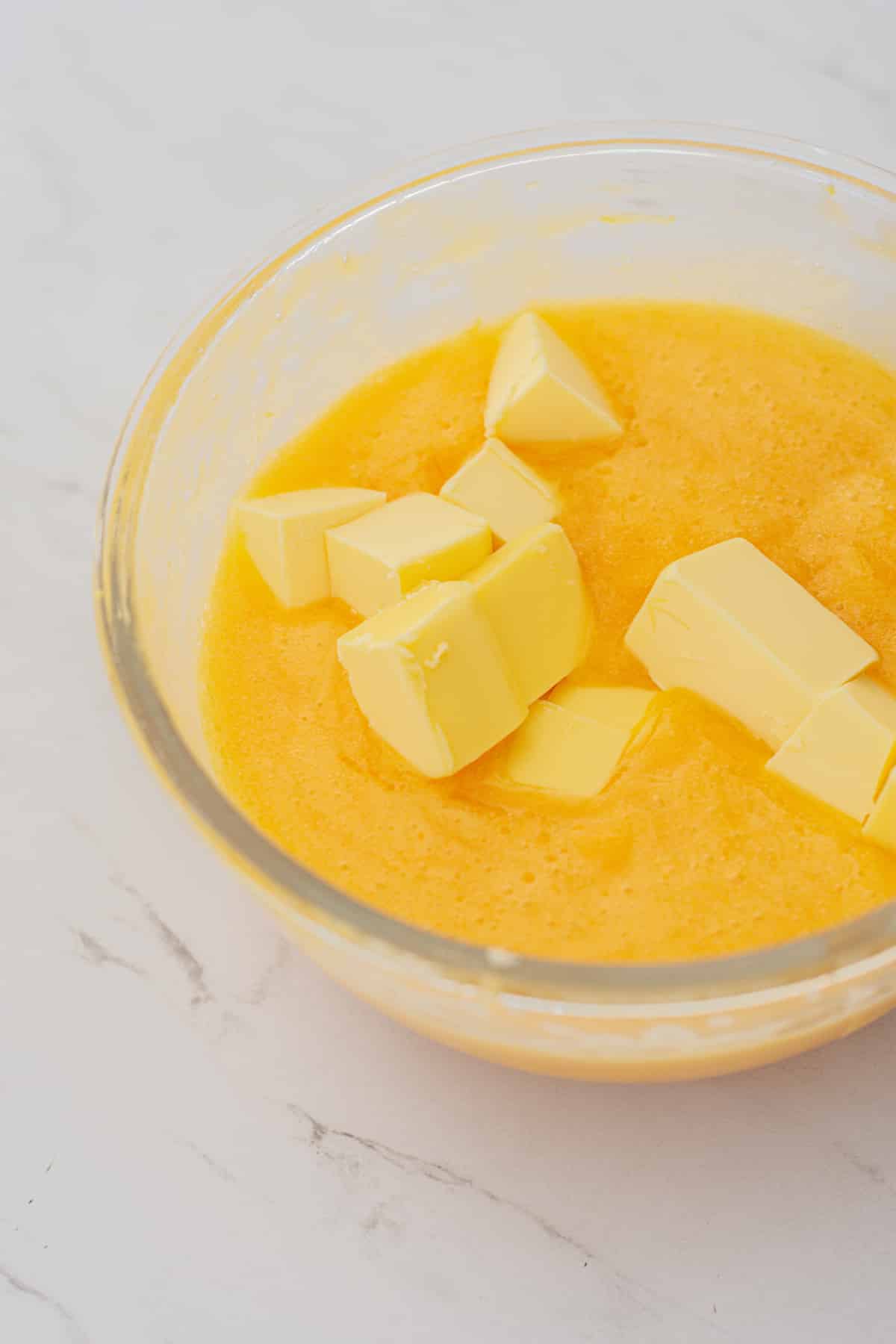
- Stir the cold cubed butter through the hot lemon mixture and stir until smooth.
- Pour the finished curd through a fine-mesh strainer into clean jars. It will thicken more as it cools. Once cooled, store it in the fridge.
The sieve will remove the lemon rind and any little pieces of eggs that may have been overcooked. It makes a much smoother curd.
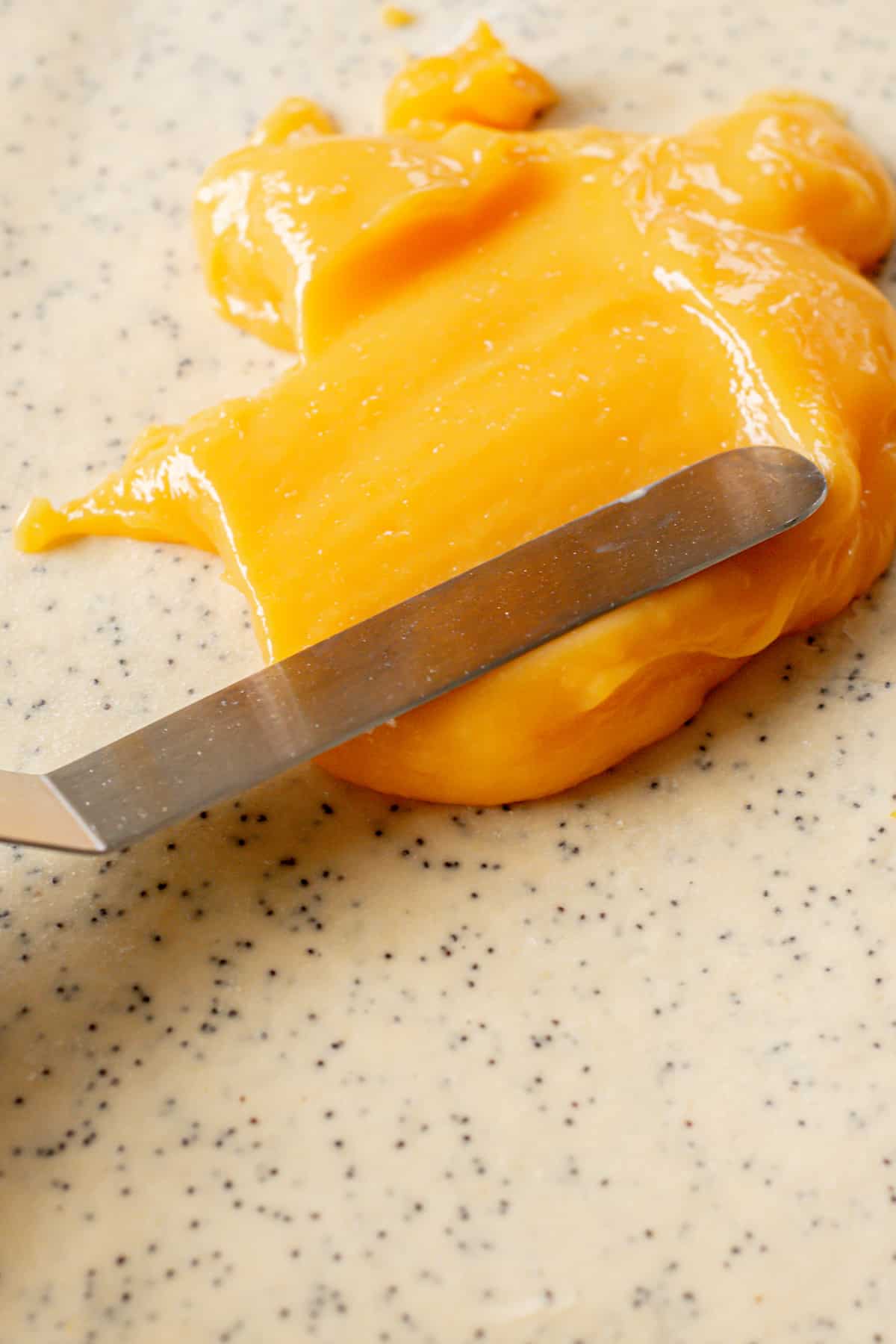
Storing lemon curd
Let the curd come to room temperature, then seal the glass jar and store it in the fridge for up to 8-10 days.
Lemon curd can be frozen too and defrosted when you need it. It doesn’t freeze very solid so you can scoop what you need straight from the freezer.
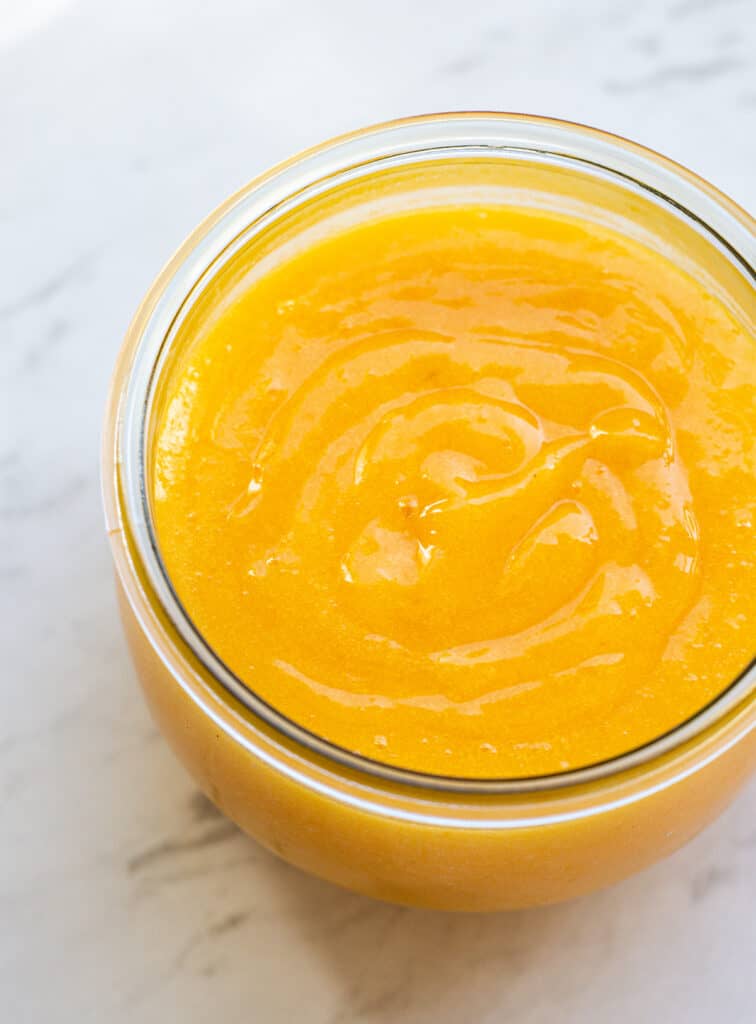
Notes
If you don’t have a microwave, this curd can also be made on the stove in a double boiler. Simply whisk together all the ingredients except the butter in a heat-proof bowl and balance it over a saucepan of simmering water.
Cook it while stirring regularly for around 12-15 minutes until thick, then stir through the cold butter. Strain with a fine mesh strainer, and pour into a mason jar or other airtight container.
Uses for delicious lemon curd
Try your homemade lemon curd in donuts, spread over pancakes, poured in a tart shell, or dolloped over ice cream, yogurt, or fresh fruit. It makes a great cake filling for lemon curd cake and lemon pie.
Spread it over pancakes or waffles, or use it in lemon tarts, lemon curd cake or lemon curd donuts, or as a pie filling.
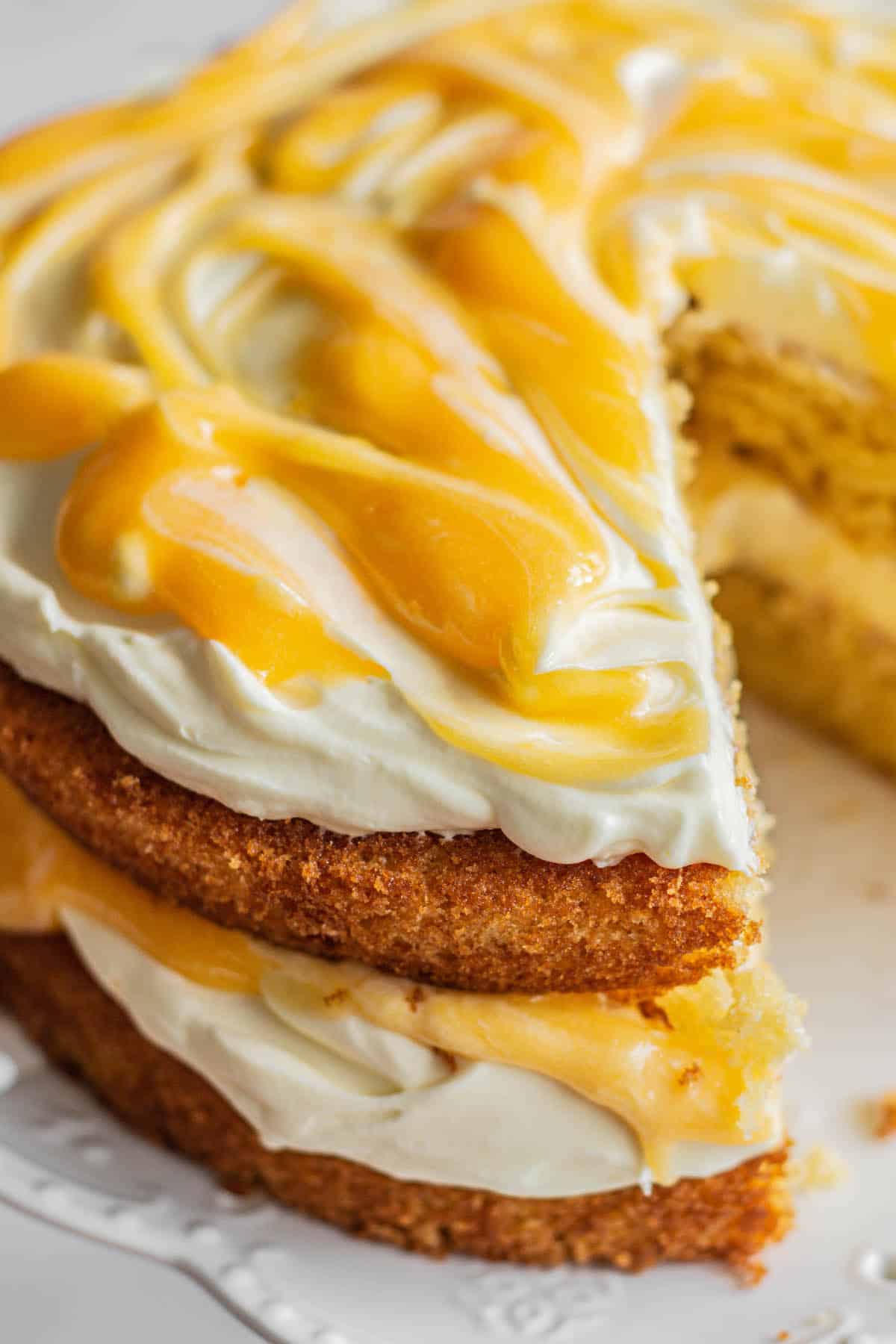
Related Recipes
If you have an abundance of another citrus, like limes, Meyer lemons, clementines, oranges, or you can use this recipe for those too! Lime curd and grapefruit curdd are delicious and tart.
Orange curd will need the addition of a little lemon or other tart citrus juice to balance out the sweetness.
Are you looking for more lemon desserts? Check out these recipes.
- Lime Shortbread Bars
- Lemon Meringue Pie with Graham Cracker Crust
- Lemon Chess Pie
- Lemon Cheesecake Ice cream
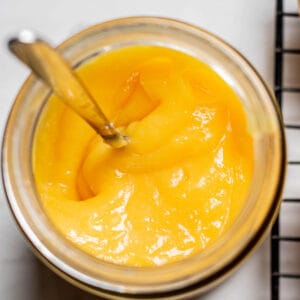
Microwave Lemon Curd
Equipment
Ingredients
- 3 large egg yolks
- 1 large whole egg
- 150 g granulated sugar
- 120 g fresh lemon juice
- 2 Tbsp lemon zest
- 1/4 tsp salt
- 85 g unsalted butter, cold and cubed
Instructions
- In a microwave-proof bowl, whisk together the egg yolks, whole egg, sugar, and salt until well combined. Whisk in the lemon juice and lemon zest.
- Place the bowl in the microwave and cook in 40-second increments, stirring each time for around 3-4 minutes. This time may increase or decrease depending on your microwave strength. The curd may puff up a little near the end of cooking time. There may be little pieces of cooked egg, but they will be sieved out later.
- Check that the curd is thick enough by dipping it in a metal spoon. The curd should thickly and easily coat the back of the spoon.
- Stir the cold cubed butter through the hot curd and stir until smooth. Pour the finished curd through a fine-mesh sieve into clean jars. It will thicken more as it cools. Once cooled, store it in the fridge.



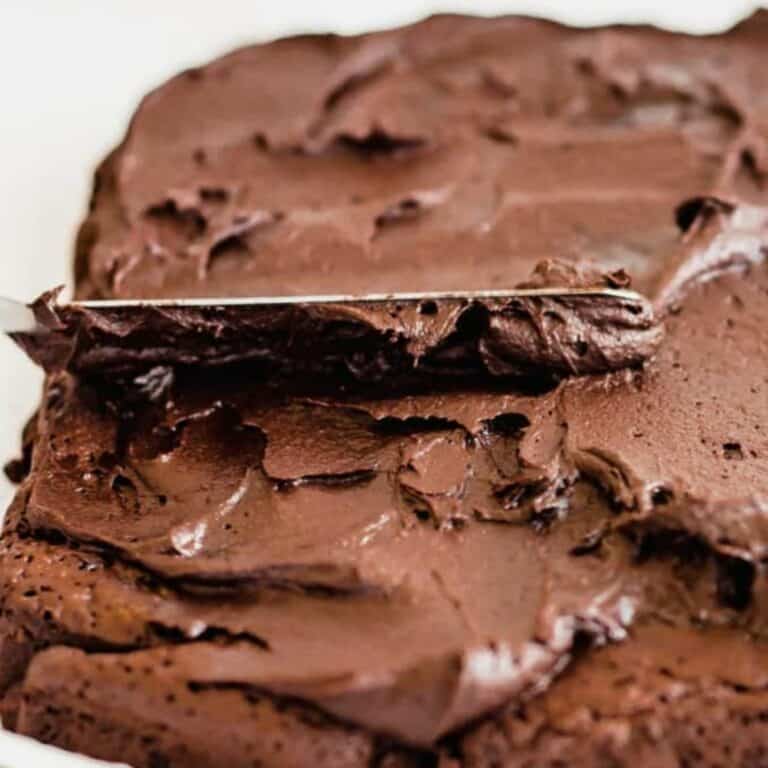
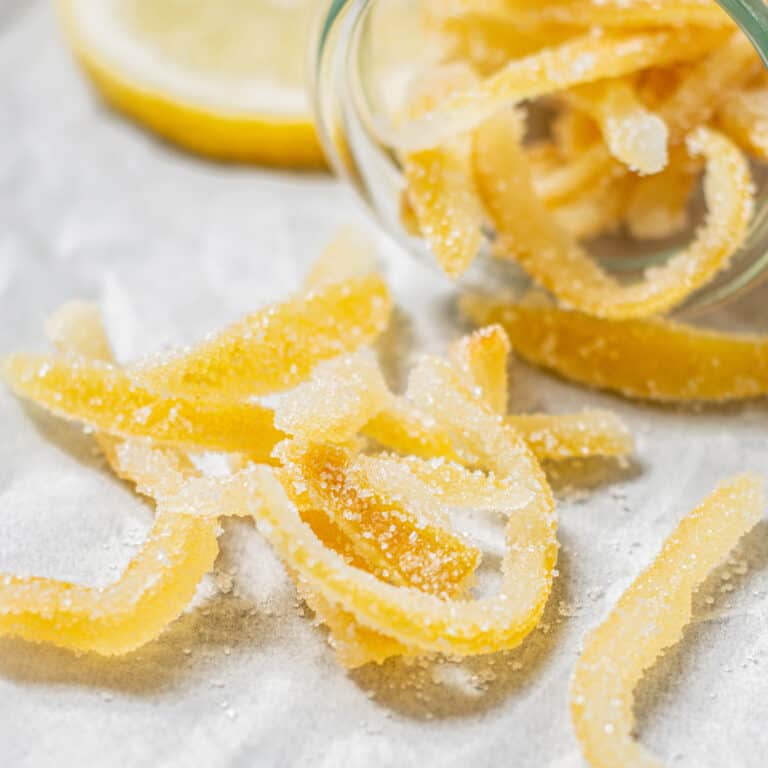

I absolutely love this recipe!! I have tried several different ones and always have to add corn starch to get the perfect thickness I’m looking for. I didn’t have to do that with this one. I did change it up a little by using half lemon and half clementine juice. Only because I didn’t have enough lemon on hand. It still turned out great! Love the flavor and consistency. Thanks for sharing 👍
So happy you love it Carrie! Lemon and clementine sounds like a delicious combo too
If I use the stovetop method, do the eggs heat enough to get pasteurized? I’m concerned about eating raw eggs and wondering if I should buy pasteurized eggs for this recipe. Thank you!
They do heat enough on the stove to be pasteurised 🙂